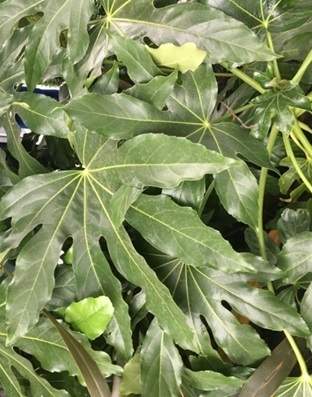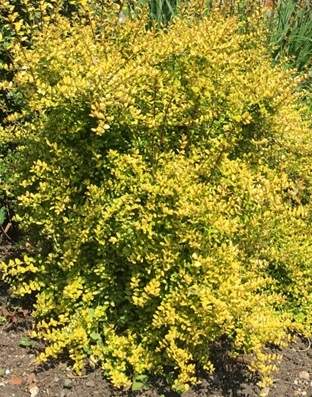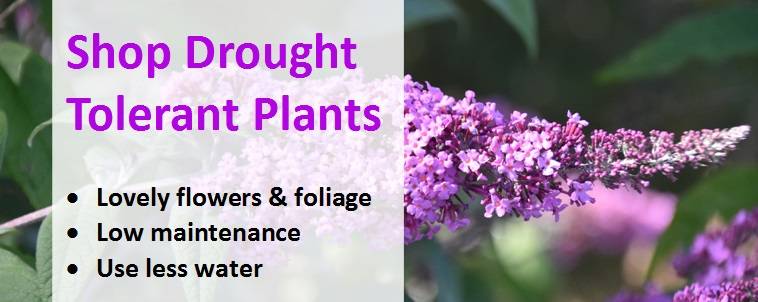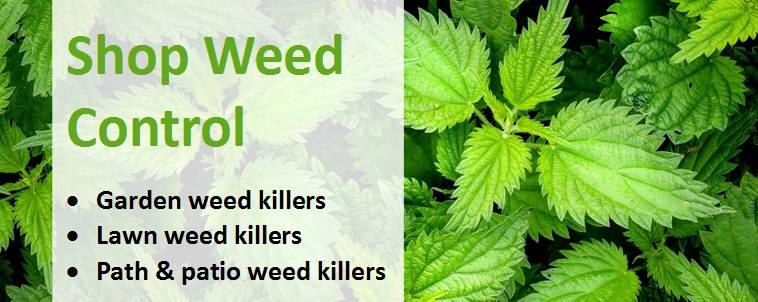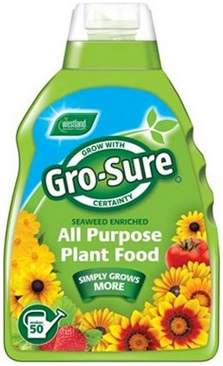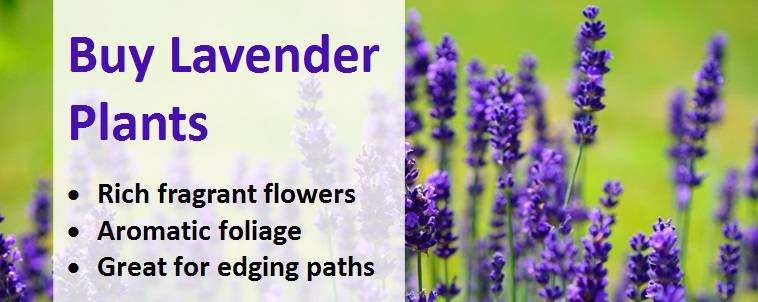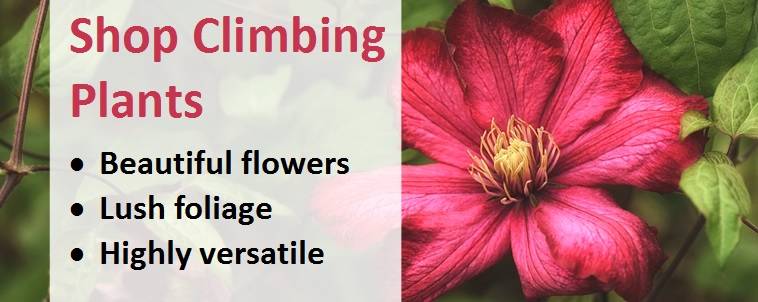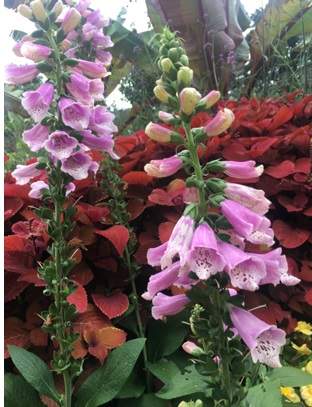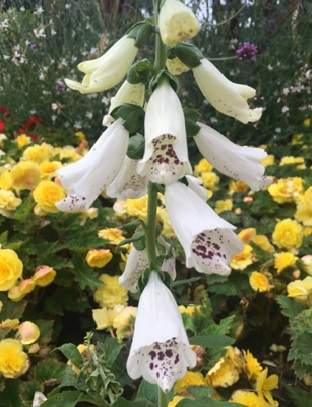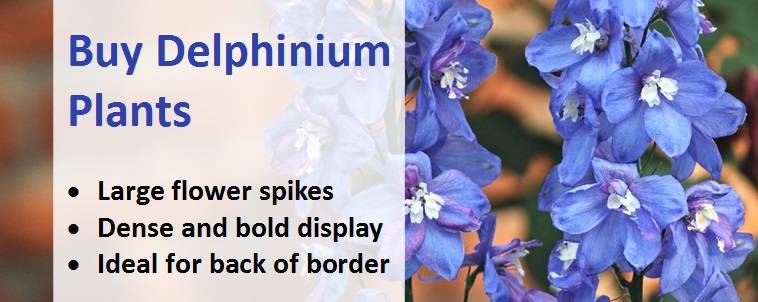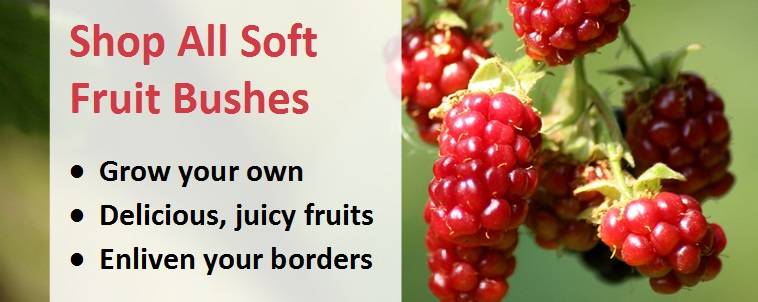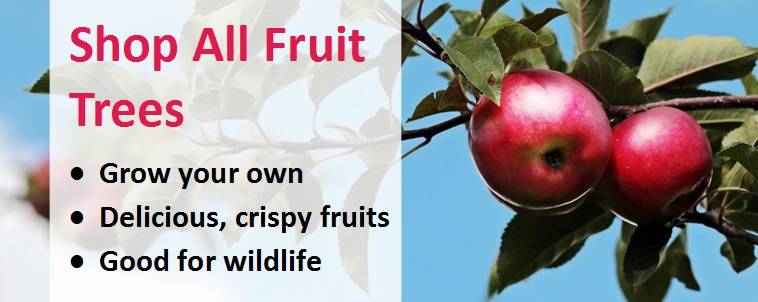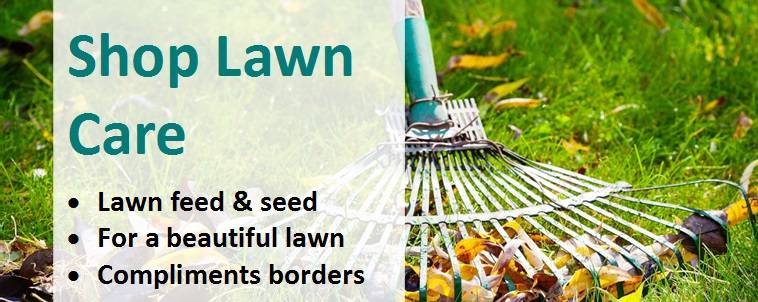Check Here Before Buying – Pot Size Matters...Not all websites offer the same. Plants in a 2-litre pot have twice the root system of a P9 or 1 litre pot.
July Gardening Jobs
July is the month to bask in the glory of your garden, but there are still a few gardening jobs that need doing. Preventing your plants from drying out in the summer heat with regular water will be top of the agenda, closely followed by deadheading to get the best display from your flower garden throughout the summer. There's plenty of harvesting to be done in the vegetable patch, as well as thinning out fruits, feeding flowers and lawns and keeping pesky weeds at bay. Tall-growing perennials can be staked, ponds cleared of debris and algae and greenhouses aired and damped down. Take the opportunity to take cuttings and store seeds of your favourite plants ready for next year. Be mindful of wildlife as you go about your July gardening tasks and don't forget to take time to sit back, relax and enjoy all the hard work you’ve put in to achieve such a beautiful display.
Across the Garden
Watering
- Without an adequate supply of water plants may become stressed, stunted, wilt or even die.
- To check if plants need watering, put your finger into the top of the soil to check for moisture.
- Large leaved plants need much more water than smaller-leaved varieties. Newly planted trees, shrubs and perennials will also be in particular need of your help through dry spells.
|
Large leaves - Fatsia Japonica |
Small leaves - Lonicera Baggesen's Gold |
- Plants in containers are most dependent; in summer check their soil daily even when it rains.
- Terracotta pots are prone to evaporation - dampen the pot as well to keep roots cool and damp. Where possible porous containers such as terracotta should be lined with polythene (avoiding the drainage holes) to prevent water loss through the sides of the container via evaporation.
- Be environmentally responsible by using water wisely and using 'grey' water or stored rainwater.
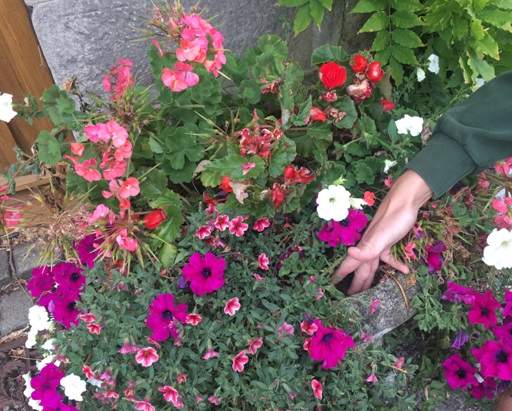
- Water generously, less frequently, not little and often. This encourages the development of deep roots which over time will be able to find their own water and become drought tolerant.
- A good technique is to create a 'moat' over the rooting zone by ridging up the soil about 30cm away from the main stem all the way around the plant. Each time you water, the ridge prevents the water from running off so that it soaks in where it's needed most.
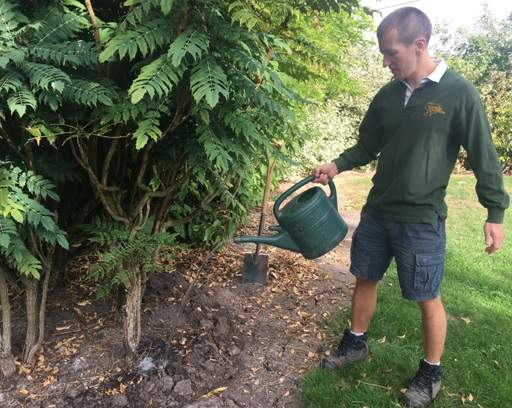
- Water plants in the evening when it will not immediately evaporate and avoid water droplets from heating up and damaging the leaves.
- Direct water at the base of the plant - it doesn't need to go all over the leaves.
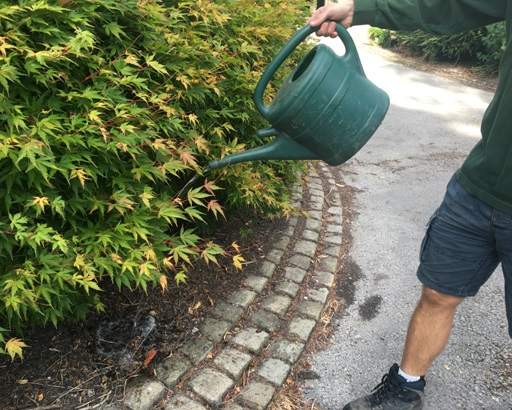
- Put a saucer under plants in containers to reduce water loss (don't let them sit in excess water).
- Apply a bark or gravel mulch around plants during hot spells to help retain moisture.
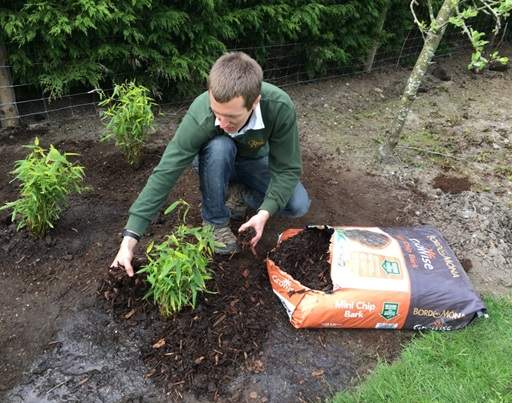
Weeding
- Hoe off surface weeds and hand-weed borders regularly so weeds don't have time to set seed. Remove the longer tap roots and apply mulch as it becomes available from your compost heap.
- Collect and dispose of seed heads from dandelions and other weeds before they get a chance to release their seeds and spread throughout your garden.
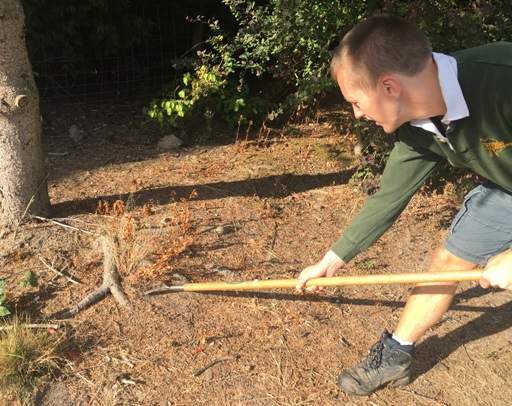
Feeding
- Different plants have different nutritional needs and different fertilisers are available to meet them. Fertilisers are available in different combinations of nitrogen, phosphorus and potassium with a different mix being needed for different parts for the garden.
- Nitrogen encourages the production of strong stems and foliage, so fertilisers with high nitrogen levels are best for lawns and leafy vegetables.
- Potassium-rich fertilisers help nourish flowers and fruit without over-feeding the stems, making them well suited to plants like dahlias and tomatoes.
- Phosphorus is essential for seed germination and for young plants to develop good root growth. Root vegetables such as carrots and turnips need a high phosphorous fertiliser.
|
|
|
In the Flower Garden
Dead Heading
- Dead head repeat flowering perennials such as Penstemon, Geraniums, Delphiniums and Lupins as well as bedding plants to encourage them to re-bloom so you have a longer display of flowers.
- Dead-head roses to keep them looking tidy, although if your rose produces attractive seed pods ("hips") you may want to leave the flowers in place. Keep an eye out for rust on rose leaves. If spotted, prune out badly affected foliage and/or spray with a fungicide.
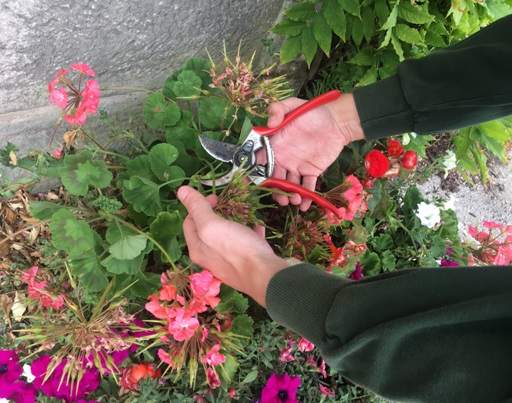
- Pick off flowers on coleus plants to maintain their colourful leaves.
- Cut lavender for drying, choosing newly opened flowers for the best fragrance. Hang up in a cool, dark place to bring the beautiful scent into your home.
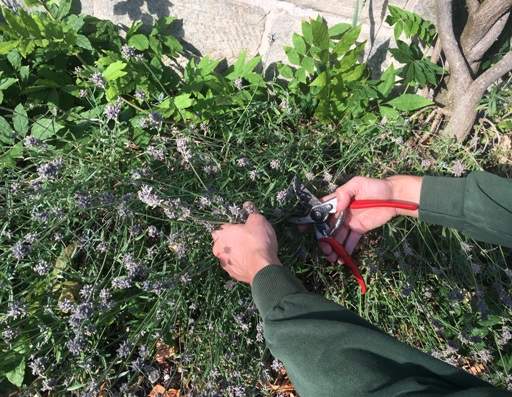
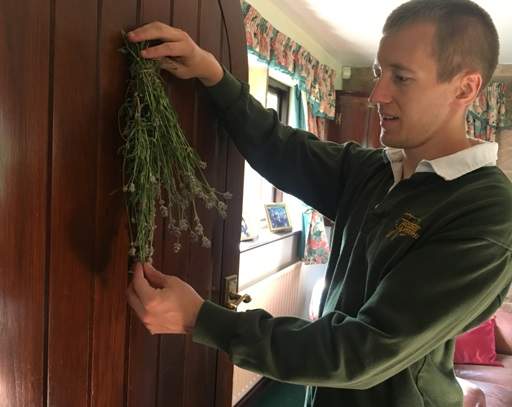
Pruning
- Remove some of the woody growth from established shrubs such as Spiraea and Weigela to the ground once they have finished flowering to create an open structure.
- Prune Honeysuckle, Wisteria and ornamental vines by removing flexible side shoots at 20cm from where they join the main stem to prevent them getting out of hand.
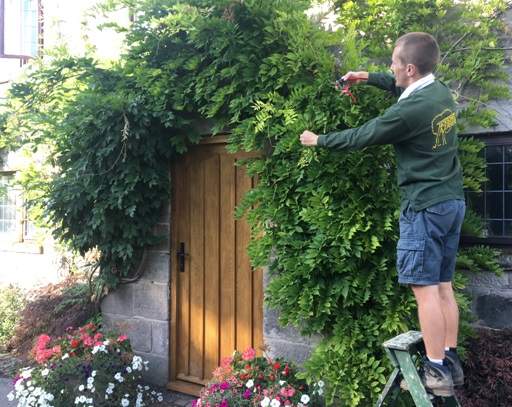
- Undertake corrective pruning of deciduous Magnolia trees, if required.
- Watch out for clematis wilt. Classic symptoms are wilting leaves and discoloured leaves/stems. If your plants are affected, remove the affected parts and dispose with your household waste.
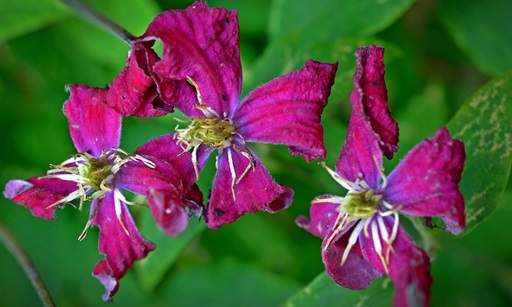
Strimming
- Cut back perennial meadows using a strimmer, leaving seed heads to scatter across the soil for a few days (if you want them to reseed) before gathering up the clippings for compost.
- Then mow the meadow to make it short and even. Most wildflowers grow best in low-nutrient conditions, so we recommend removing all mowings to avoid enriching the soil.
Feeding
- Feed and water sweet peas regularly, picking the flowers every 2-3 days and removing seed pods to prolong flowering and treat dahlias to a high-potassium liquid feed.
- Feed hanging baskets and cut back straggly and tired growth to revive the display.
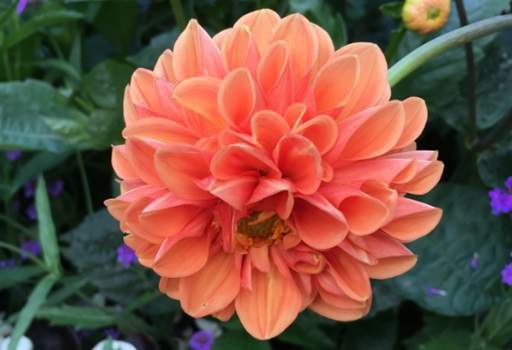
- Feed roses with a handful of blood, fish and bone after their first flush. This will help keep them healthy, looking good and less prone to disease.
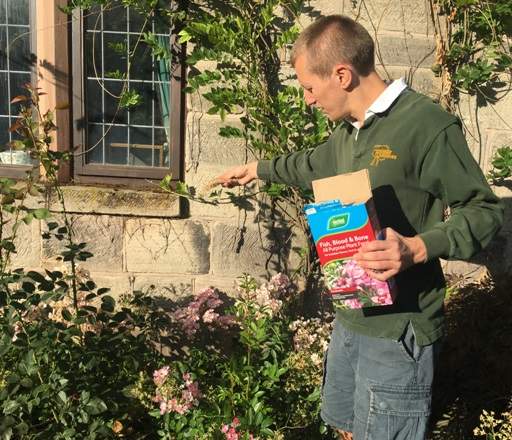
Staking and Support
- Stake tall growing bulbs such as Dahlias, Lilies and Gladiolus. Their flowers will make them top heavy and liable to blow over in the wind without some support.
- Loosen ties on trees and standard roses if they are becoming too tight. Fix tree ties so the buckle is on the opposite side of the stake to your tree, remembering to put the spacer in the middle to prevent chafing. Allow a little space for growing room but have it sufficiently tight so the tree cannot jiggle around excessively in the wind.
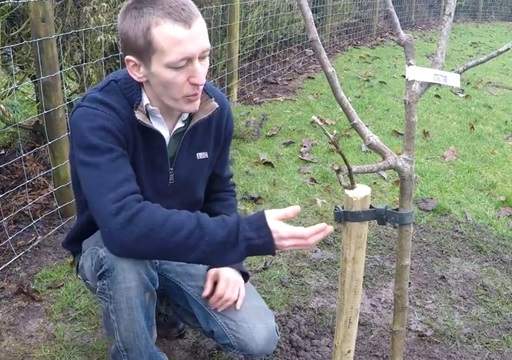
- Tie in and train new growth on climbing plants using garden twine.
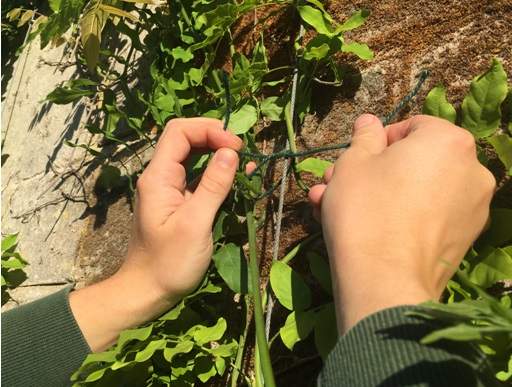
Lift & Divide
- Lift, divide and replant congested and over-sized clumps of early-flowering perennials such as Bearded Iris, Polyanthus and Pulmonaria once they've finished flowering. This will allow them to form roots and flower buds for next year in their new location before the weather gets too cold.
Sowing and taking Cuttings
- Sow biennials, such as forget-me-nots, foxgloves, and wallflowers, for flowers next year.
- July is the last month to sow Delphinium, the cottage garden stalwarts, for flowers in their second year. Delphiniums are excellent plants for attracting bees to your garden.
|
|
|
Foxgloves (Digitalis) are available in a range of colours including pinks and creamy whites
- Take softwood cuttings from your favourite shrubs, perennials & tender plants for over-wintering indoors, such as laurel, spiraea, hydrangeas, pyracantha and cotinus.
- Take cuttings of Pinks and Carnations to increase your stocks. Pot them into a gritty compost and keep moist under they've rooted.
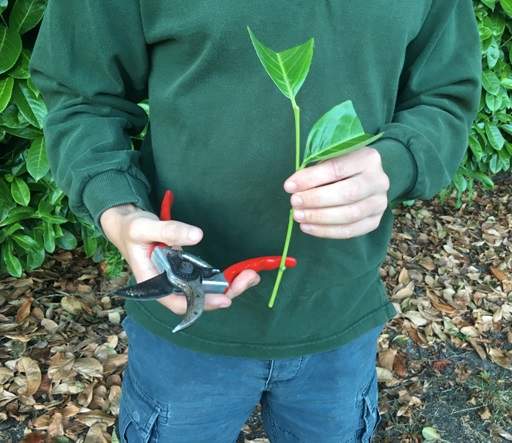
- Collect seeds from any flowers you want to grow again next year. Store them in envelopes or paper bags in a cool, dry place, labelled with the plant name and harvest date.
Vegetable Garden
Harvesting
- Catch veg while it's at its peak by harvesting regularly. Don't let it go woody or bitter-tasting.
- Harvest potatoes, carrots, beetroot, lettuce, tomatoes and salad leaves.
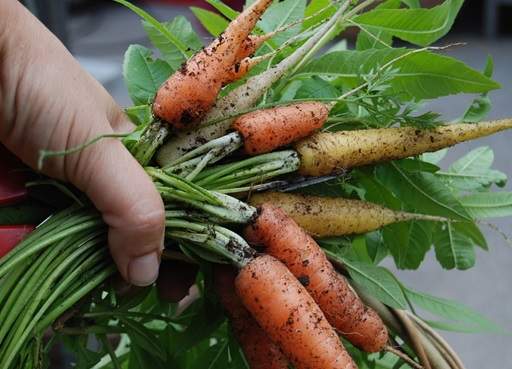
- Harvest garlic when the tops of the foliage turn yellow and start bending sideways. Eat some green or "wet" – it is delicious roasted. Hang the rest up in a sunny, dry place to ripen.
- Pick your last lots of rhubarb and remove any flower spikes that start to form down to the base.
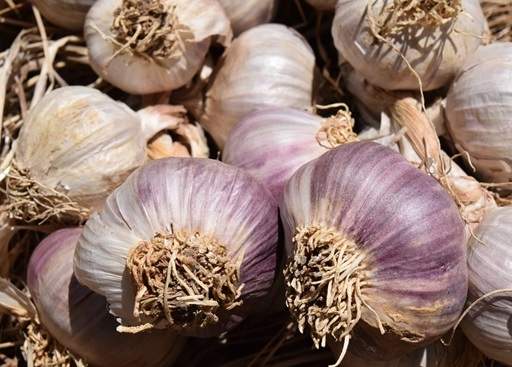
- Pick runner beans regularly to leave room for developing pods and encourage more to develop.
- Harvest, dry out of freeze enough herbs to give you a good supply for the rest of the year.
- Pick courgettes before they become marrows.
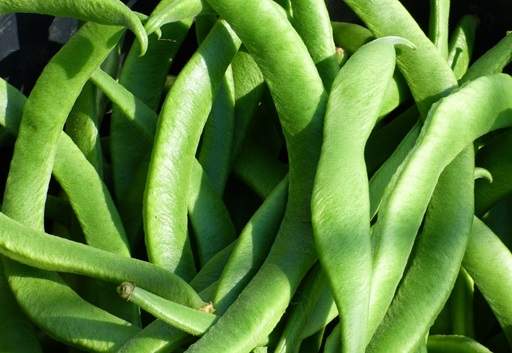
Sowing and Growing
- Sow beetroot, carrots, dwarf French beans, lettuce, radishes and runner beans outdoors.
- Sow a last batch of peas and dwarf beans before mid-July for an autumn crop.
- Plant out leeks, sprouting broccoli, winter cabbage and Brussels sprouts in firm ground.
- Sow small batches of salad leaves, rocket and radishes every few weeks for continuous pickings.
- Plant second cropping potatoes now so you have new potatoes ready to eat for Christmas.
- Pot pepper plants into larger containers.
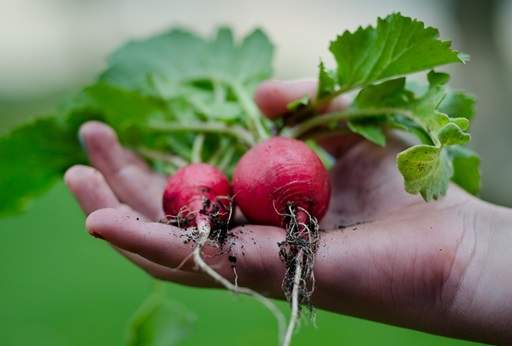
Watering & Feeding
- Water the vegetable patch daily in hot weather to ensure they are kept moist, paying particular attention to thirsty plants such as peas, beans, celery, courgettes, tomatoes and pumpkins.
- Feed vegetables with a general purpose liquid fertiliser, switching to a high potassium feed once fruits start to form on tomatoes, cucumber and peppers.
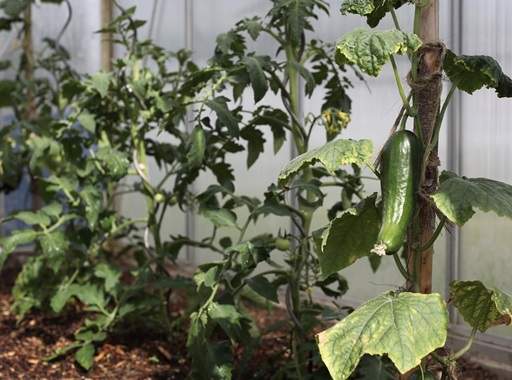
Pinching Out and Cutting Back
- Remove any diseased and tired foliage from your vegetables to keep them looking healthy.
- Pinch out the growing tips of aubergines once they have 5-6 fruits.
- Cut back the growing tips of courgette and squash plants to encourage branching.
- Pinch out any side shoots on your tomatoes and remove any leaves below the lowest fruit trusses to allow good air circulation.
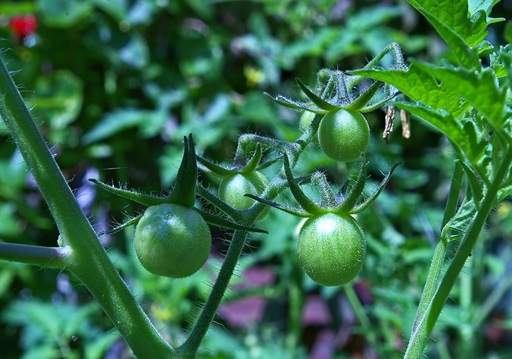
Caring for your Patch
- Prevent cucumber stems from lying across the ground by training them upwards using vertical wires or a pyramid of canes. Pinch out sideshoots two leaves after a flower or fruit.
- Check your veg for aphids and run or wash them away if spotted before they multiply. Runner beans can be particularly susceptible.
- Target blackfly on any broad beans by removing affected growing tips. Cut down broad beans once the harvest is over, leaving the roots in the soil to release nigtrogen as they decompose.
- Cover the soil around your potatoes to stop tubers near the surface from turning green. This can be done with compost or grass clippings as mulch.
- Fend off slugs and snails using organic methods such as crushed egg shells or a slug killer. For vegetables grown in containers, copper slug tape around the pot can be highly effective.

Use a slug killer if organic methods don't work
Fruit Garden
Harvesting
- Harvest peaches, nectarines, apricots and raspberries.
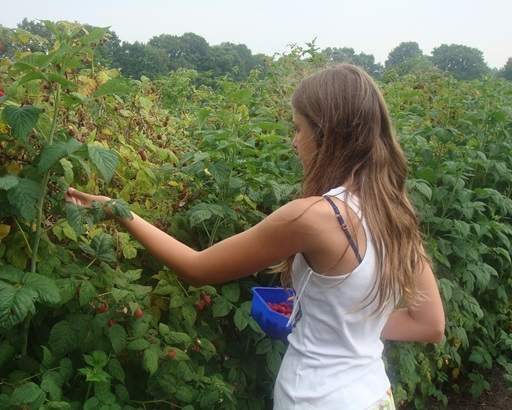
Feeding
- Feed potted trees with a high potassium fertiliser such as tomato feed to maximise your crop.
Thinning Out
- Thin out fruits on your fruit trees to provide space for the strongest to develop into good sized crops and allow good air circulation to reduce the risk of disease. Start by removing any malformed, damaged or under-sized fruits in each case.
Training & Pruning
- Trim new growth of gooseberries in the early part of the month if not carried out last month.
- Tie new canes of blackberries and loganberries to their supports.
- Once figs have developed, pinch out the tips of side shoots to maximise your crop.
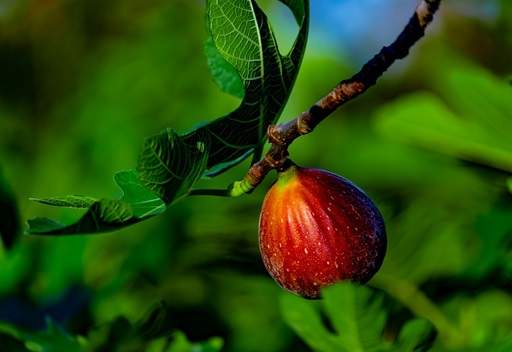
- Summer prune cordon apples and pears to maintain their shape, shortening side shoots growing from the cordon framework to five leaves from their base.
- Prune cherry, apricot, peach and plum trees this month when silver leaf disease is less prevalent. Silver leaf is an air borne bacteria which enters trees via a wound, weakening the affected area by preventing it from photosynthesising. Prune in the winter and the bacteria will be drawn into the wound as sap retreats, but in the summer the rising sap will repel the alighting spores.
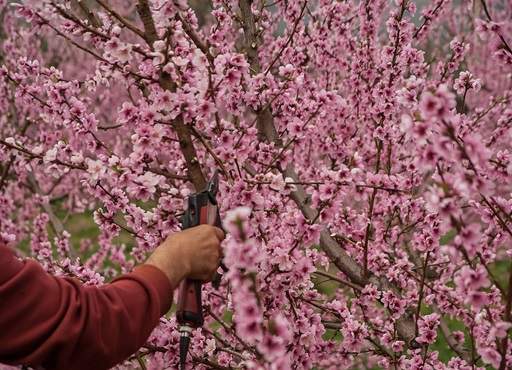
Protecting your Fruit
- Net fruit trees at risk from birds and squirrels. If you have large trees such as cherries outside of a fruit cage where it's not feasible to net the whole tree, consider protecting one branch or section and let the birds take the rest.
- Put a net over strawberry containers so they don't become a feast for birds as the fruits ripen.
Propagating new Plants
- Propagate more strawberry plants for next year by pegging down runners into the ground or pots of compost to root new plants. If you (or your friends and neighbours) don't need more plants remove the runners completely.
Avoiding Pests and Diseases
- Apply fungicide to apple scab. Read the label carefully and apply in the recommended amounts.
- Check gooseberry bush leaves for sawfly larvae, removing by hand or by spraying with water.
Lawn Care
- Keep your lawn green throughout the summer by turning on the sprinklers for 30 minutes once a week. Avoid over-watering which will leave your lawn soggy and prone to disease.
- A fine spray attachment on the hose does just as good a job if you don't have a sprinkler. Spike the lawn with a garden fork before watering if your ground is particularly dry and hard.
- If you forget to water and your grass turns brown, it will green up again when the rain returns.
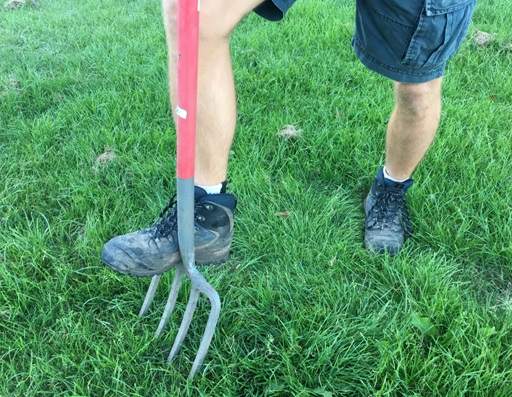
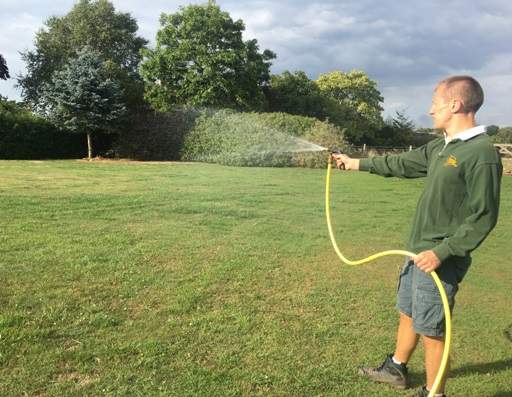
- Feed your lawn with a fast-acting summer feed, especially if you did not feed it in the spring.
- Spreading by hand works fine but you'll find a spreader gives a more even application.
- Feeding after mowing not before will prevent the fertiliser being disturbed once on the surface.
- Feeding after it has rained (or after watering) works best as fertiliser is absorbed into moist ground more easily. All modern fertilisers are designed to be pet and child friendly.
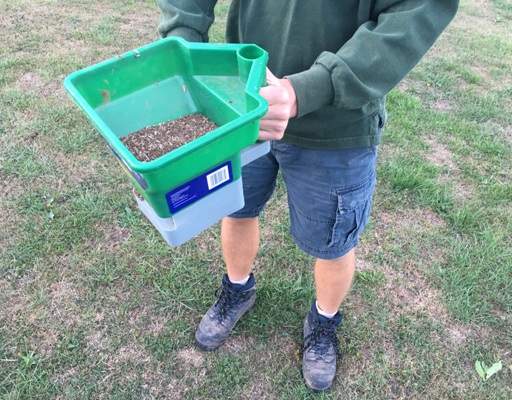
- Mow the lawn once a week. For established lawns follow the one third rule - quite simply, do not cut more than one third of the total height of your lawn in one go.
- Keep the grass longer in areas that are shady or take a lot of wear and tear. Don't mow too short as this will weaken the grass and allow weeds and moss to grow through the lawn.
- Raking before you mow can help to control the spread of creeping weeds like clover and yarrow.
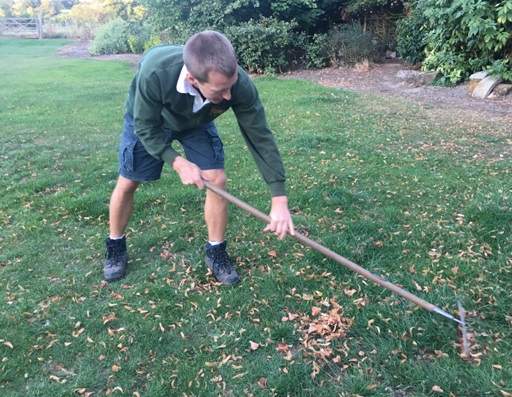
- Re-cut lawn edges as needed. Consider installing lawn edging to make maintenance easier.
In the Greenhouse
- Water plants under glass every day, either in the morning or evening to minimise water loss through evaporation. Provide shade through netting, blinds or shade paint to keep plants cool.
- Keep the greenhouse well ventilated by opening all doors and vents early in the morning. This will kelp keep the greenhouse cooler. Don't forget to shut the vents again in the evening.
- Increase humidity and deter red spider mites by damping down your greenhouse on hot days (pouring water onto the floor of your green house). As the water evaporates it will create enough humidity throughout the day to prevent your plants from suffering heat stress.
- Install traps to catch flying pests (sticky traps are often the easiest and most effective form) and determine if any pest control is needed.
- Tidy fallen flowers and foliage to prevent the spread of fungal diseases. Regularly sweeping greenhouse floors and staging will help reduce debris that can harbour pests and diseases.
- Harden off plug plants outdoors.
Keeping your Pond in Top Condition
- Remove debris from your pond and clear blanket weeds and algae before topping up the water. Remove any yellowing leaves on water lilies and other water plants before they fall off; allowing them to rot in the water will decrease water quality.
- Remove blanket pond weed with a rake to allow oxygen in. Pile the weed next to the pond for 24 hours, rather than disposing of it straight away, to allow aquatic life to return to the water.
- Keep your pond topped up regularly using rainwater from a water butt as chemicals in tap water can affect the nutrient balance of your pond.
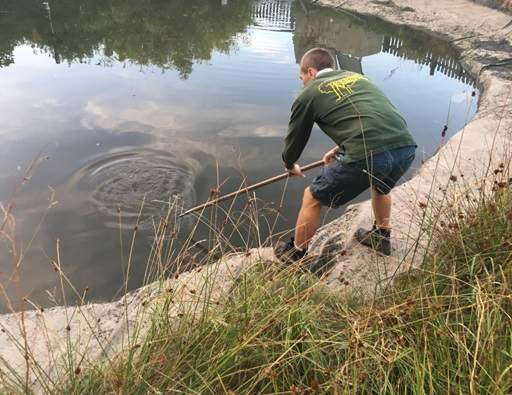
Jobs Elsewhere in the Garden
- Turn compost heaps (or the contents of compost bins) every month to keep them well aerated.
- Keep bird baths, ponds and water features regularly topped up in hot weather.
- If you spot any powdery mildew on your plants, remove the affected parts and spray with a fungicide to prevent it spreading any further.
- Keep an eye out for aphids (small bugs which feed by sucking sap from your plants) on the underside of leaves. Remove them by hand or use an insecticide spray.
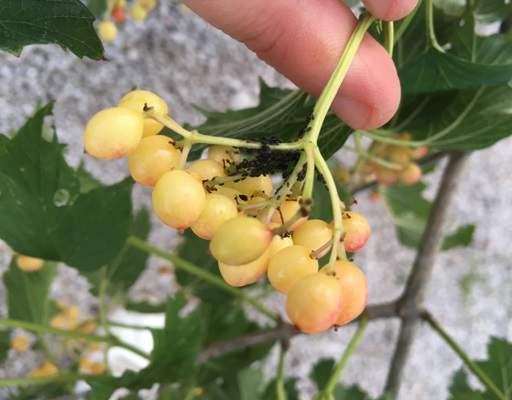
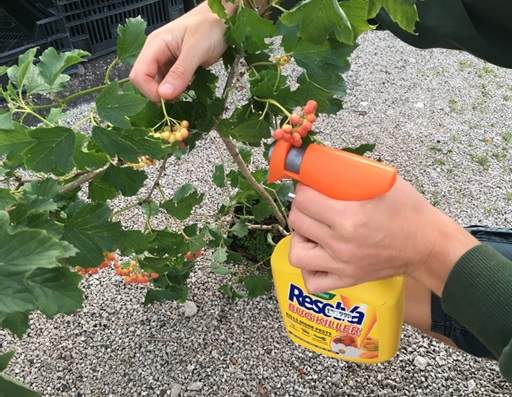
- Look for scarlet lily beetles on your lilies, removing and killing any you see. An early warning sign is sticky brown larvae on the underside of leaves.
- Give your shed or summerhouse a facelift with a new coat of paint or preservative.
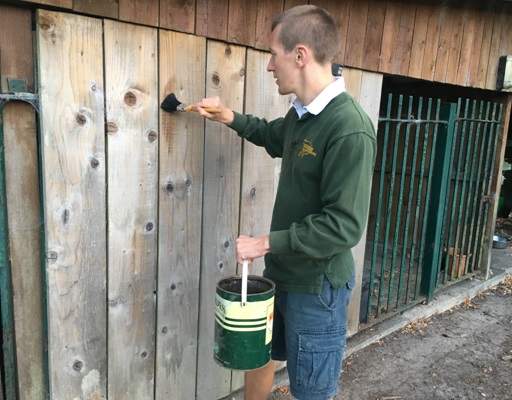
- If your plants look ill and there seems to be no obvious cause, remove their pots and check for vine weevils ('C' shaped creamy maggots) amongst the roots. Treat with nematodes if spotted.
- Houseplants can be taken into the garden and hosed off to remove accumulated dust. Feeding houseplants weekly until autumn will help keep them in peak condition.
Helping Wildlife
- Some baby creatures, such as toads, frogs and hedgehogs, will be beginning to emerge in July. Give them a helping hand by creating safe hiding places - leave some areas of long grass around your pond, grow pond-side marginal plants to provide shelter and check longer parts of your lawn before moving to make sure there are no amphibians sheltering there.
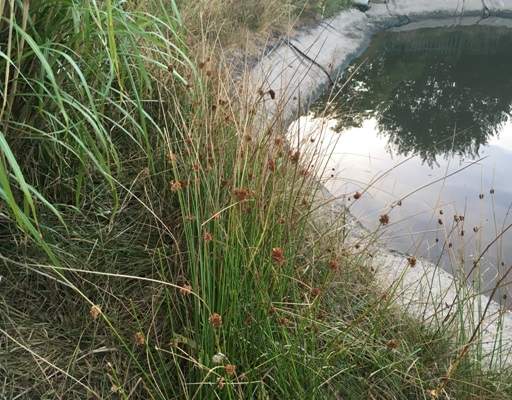
- Baby hedgehogs will be starting to emerge any day now in the search for extra food. Leave out water and meat-based dog or cat food (chicken flavour goes down well) to help them fatten up before going into hibernation in late autumn.
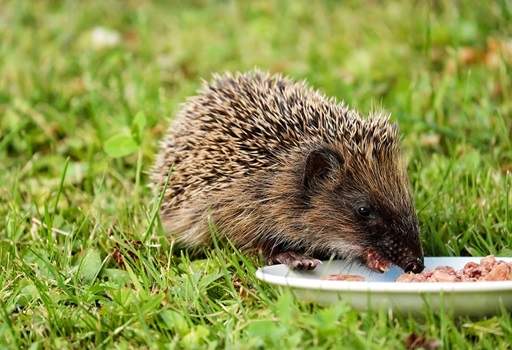
- Leave a patch of long grass & nettles in a good area as a place for butterflies to lay their eggs.
- Top-up your bird and wildlife feeders and water containers, especially during dry weather.
- Consider purchasing some plants for attracting wildlife for your garden.
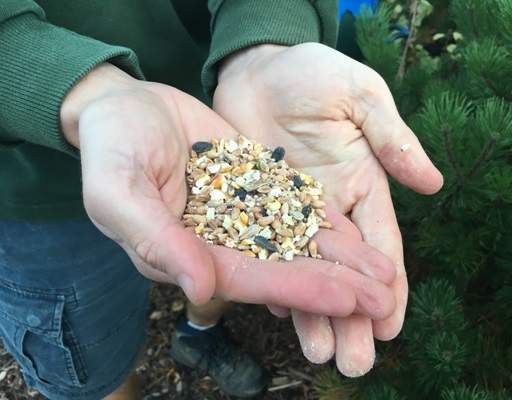
From your deckchair
- Keep a record of what has gone well in your garden this year and what can be improved. This will come in useful to refer back to in case you want to make any changes next year.
- Think about and start planning any projects you want to carry out in your garden in autumn.
- Share the best photographs and videos of your garden in full bloom on our Facebook page.
Whether you’re planting, pruning or reaping the rewards of your burgeoning fruit trees, you are sure to discover many delights in the garden this month. Don’t forget to also find time to sit back, relax and enjoy all the hard work you've put into your garden too.

Share this page:

